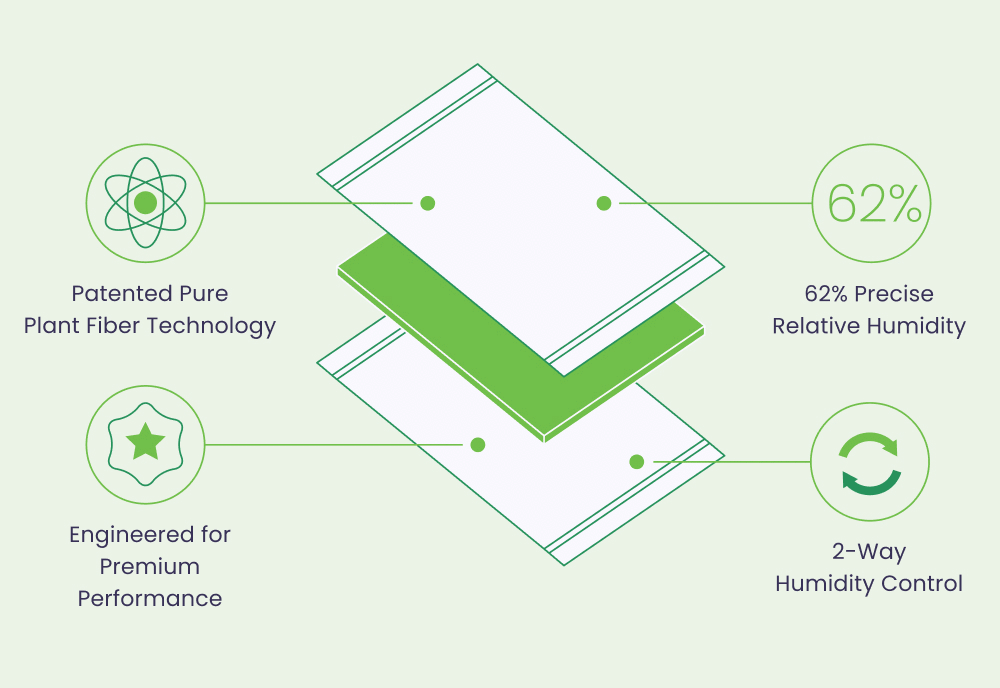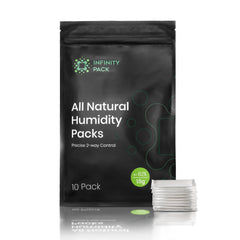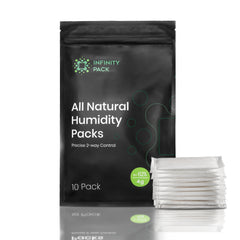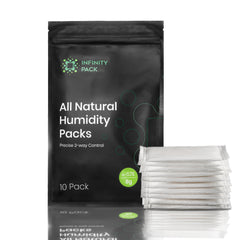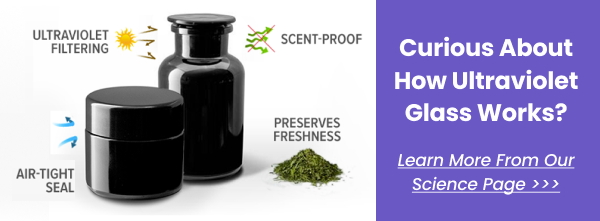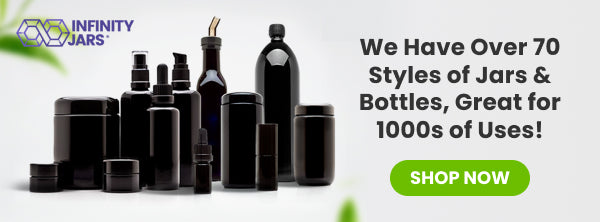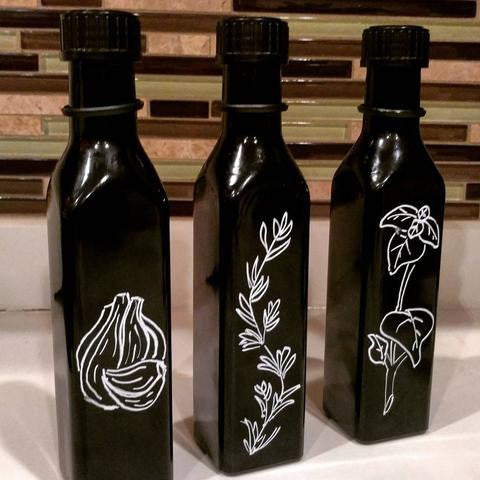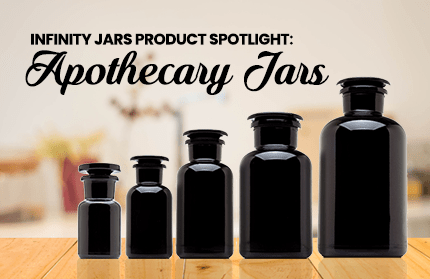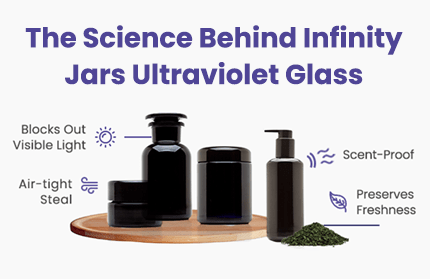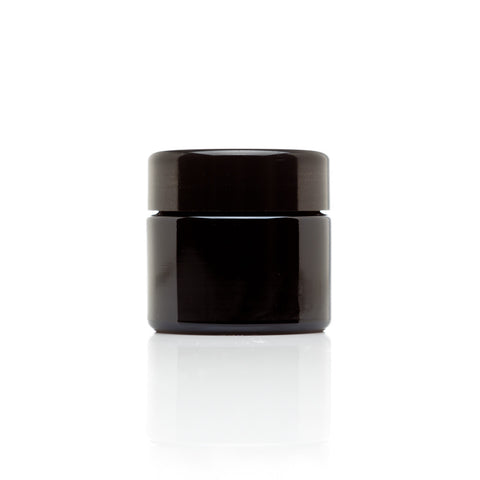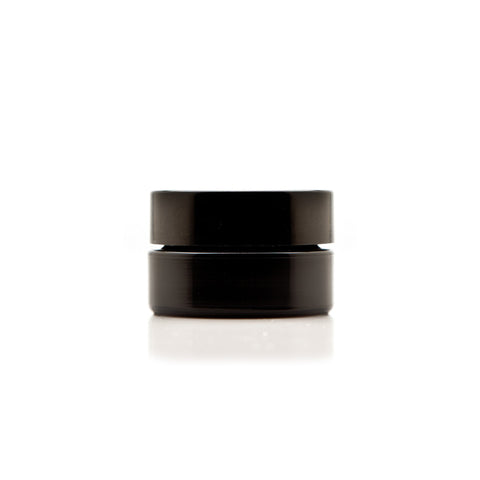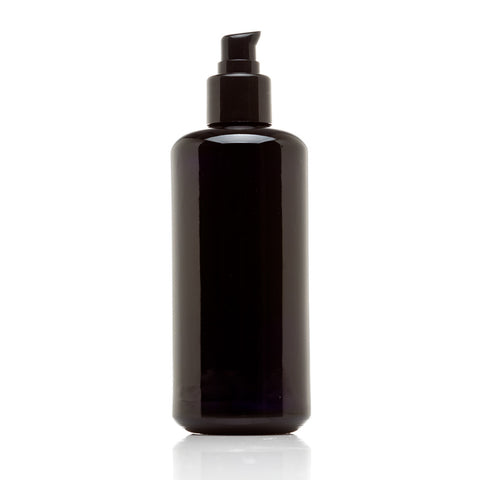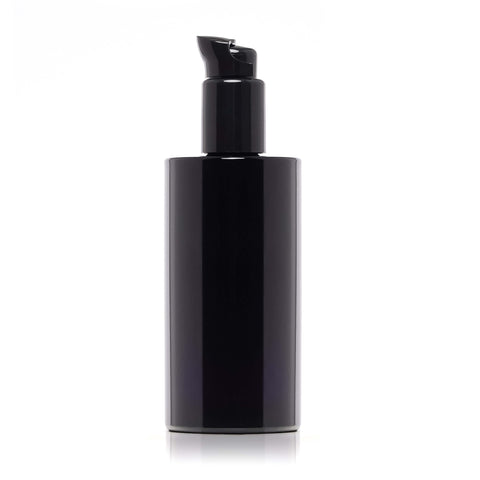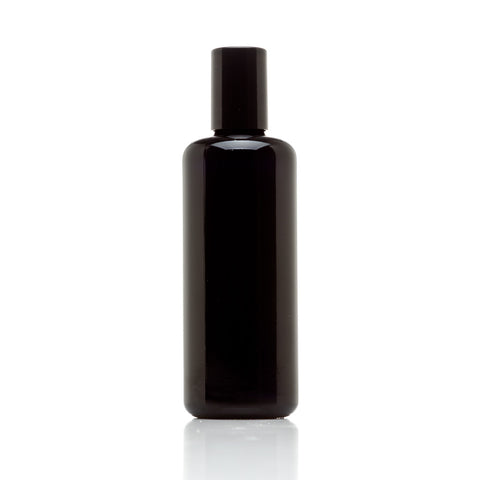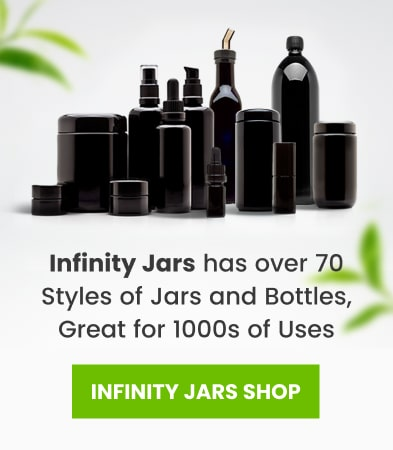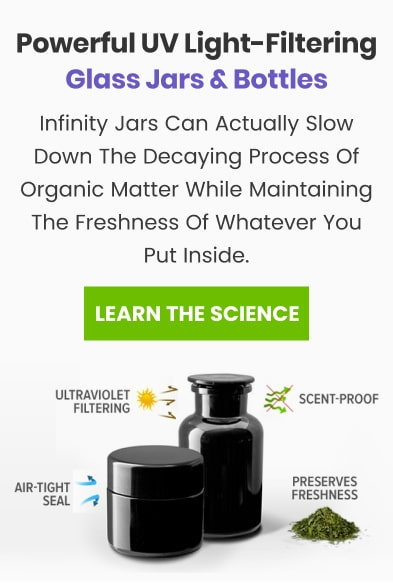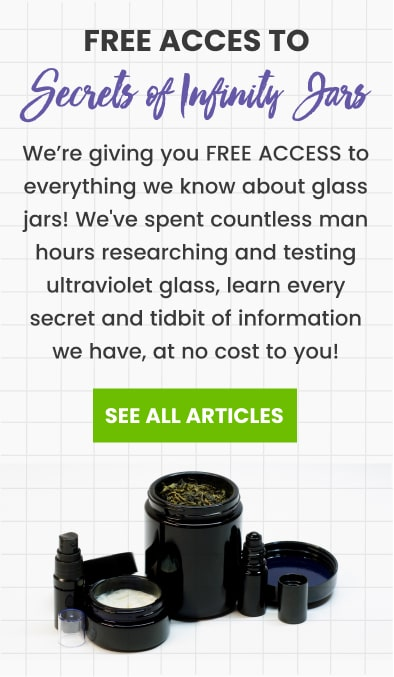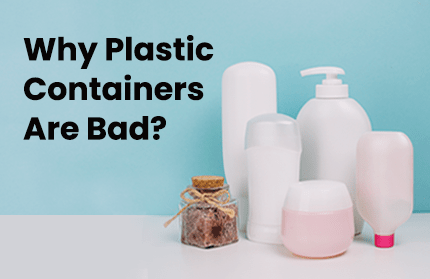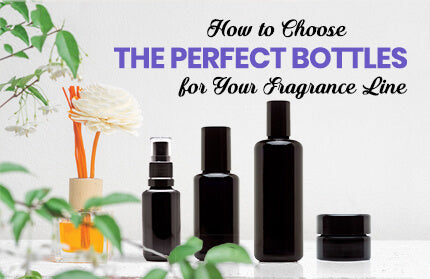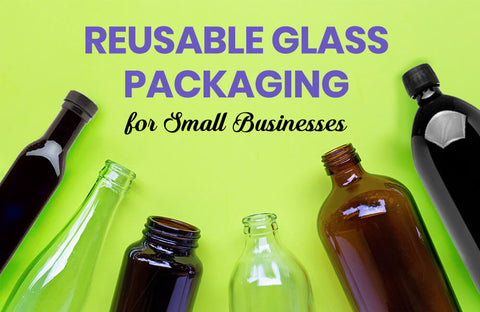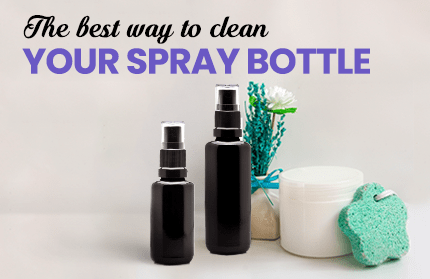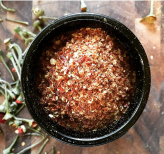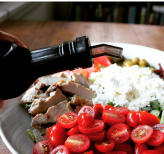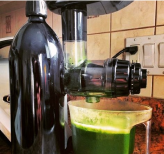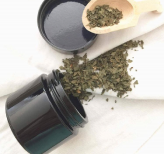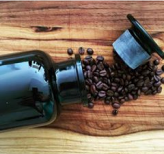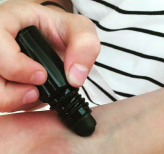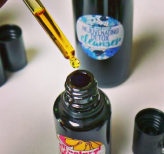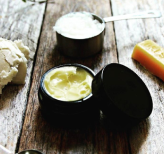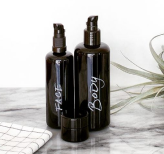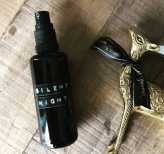
Clear vs Colored Glass: Which Offers Better UV Protection?
In the same way that prolonged sun exposure can cause serious skin problems in humans, exposure to UV light can also cause problems in products. Thankfully, there are UV glass jars that can protect and preserve products so they can stay fresh and effective for longer.
Glass packaging is one of the most popular choices for many different industries. Glass is scientifically proven to be chemically stable and non-reactive, which is why it holds a Generally Recognized as Safe (GRAS) status from the USA Food and Drug Administration.
Clear glass jars and colored bottles are commonly used in cosmetics, pharmaceuticals, and in the food and beverage industry. Consumers typically notice them because of their aesthetic quality. However, the truth is that glass containers offer more than just nice looks--and the businesses that use them know it.
In this article, we’ll delve deeper into the bigger benefit of using glass jars: visible and ultraviolet light protection. We’ll also discover how different types of containers, particularly clear and colored glass jars, differ in terms of their protective qualities, and how this knowledge can guide you in choosing the best containers for your business.
Additionally, we’ll answer some of the common questions about glass jars: How are they made? What makes them clear or colored? Which glass containers are the best?
Brief History of Glass & Glass Containers
Let’s start with a little bit of history. Humans have used naturally occurring glass, particularly obsidian or volcanic glass, since the Early Stone Age. Historical accounts say that people used glassy rocks to make sharp cutting and scraping tools. Around 2500 BC, people started using small pieces of obsidian as beads, bangles, or jewelry. It wasn’t until centuries later when people discovered that glass could be made and molded into useful things like tableware and vessels or containers.
Some historians say that human-made glass was first discovered in Syria when a group of natron merchants got shipwrecked. Natron is a naturally occurring material that results from the combination of sodium carbonate decahydrate, sodium bicarbonate, and little amounts of sodium chloride and sodium sulfate. Natron has been used as a cleaning product for thousands of years, which is why it was a profitable product back in the day.
As stories tell it, the shipwrecked merchants used lumps of natron to mount their pots and cook food. As they cooked, the fire and the combination of natron and the sand below it produced molten glass, leading to the discovery of human-made glass.
Later on, glassmaking spread throughout different areas, including Egypt, Greece, and Rome. Soda, lime, and silica became the widely used materials to make glass, and glass vessels and bottles became common in many civilizations. However, glassmaking did not become as prominent, mainly because it was a difficult and painstaking craft to engage in.
However, one of the most important glassmaking innovations happened when the glass blowing technique was invented. With the use of an iron tube, glassmakers were able to make glass vessels with a more consistent structure. An iron tube is made with a mouthpiece on one end and a knob that holds the glass on the other. Glass blowing also enabled glassmakers to produce more glass bottles, jars, and other glass products within a shorter period of time.
However, glass blowing was still inefficient, especially in the face of an increasing demand for bottles and glass apothecary jars. This led inventors to come up with better ways to make glass--ways that will improve both the process and the output of glassmaking.
In 1903, an American inventor, Michael Owens, designed an automatic glass forming machine that can mass-produce glass bottles. In 1915, another inventor named Karl Peiler made an even more efficient machine called the “gob feeder.” This machine had better temperature control, resulting in an improved mold of glass containers. Then, in 1925, Henry Ingle further improved the design by creating individual section feeders. This made glass production much more efficient, and many glass manufacturers still use this technology today.
What’s more, people also found better ways to seal glass jars. The common seal that people used was made of wax, but clear glass jars with locking lids soon became common. Later on, various other types of caps and lids were invented, including corks, plastic lids, aluminum lids, lids with mist sprays, push pumps, and many more.
Because of these inventions that made the mass production of glass easier and more efficient, cheap glass jars are now easy to find. However, glass blowing hasn’t left the scene. Today, glass blowers are considered as artisans who design skillfully craft glasses that no machine can make. Meanwhile, for businesses that need colored or clear glass jars wholesale, they can easily find suppliers who can provide machine-made glass containers.
What Makes Glass Containers Clear or Colored
The earliest glass containers were neither clear nor purposely colored. Instead, they were naturally stained--even had bubbles, sometimes--because of impurities in the materials used to make them.
It was during the Middle Ages when Venetians discovered that pyrolusite, a kind of manganese mineral, can eliminate materials that colored a glass melt. Pyrolusite back then was considered as the soap for glassmakers.
Later on, more discoveries were made, particularly coloring techniques to make glass more decorative. German chemist Johann Kunckel, for example, discovered that adding gold chloride resulted in a ruby-red colored glass.
Today, clear glass jars have become easier to make with the availability of pure materials and decolorizers. Glassmakers have also learned to use different additives to colorize glass. For example:
- blue glass is colored with the use of a cobalt compound, usually cobalt oxide or cobalt carbonate
- green glass is usually made with oxidized iron chromate
- ruby-red glass is made with copper
- yellow glass is made with antimony
- purple and amethyst glass are colored with manganese
- opaque white glass is made by adding tin
- brown or amber glass contains a mixture of sulfur, iron, and carbon
Indeed, businesses and individuals have gained a wide variety to choose from when it comes to glass containers. This choice usually boils down to aesthetics and personal preference. However, for products that have unpleasant reactions to light exposure, colored glass jars can give them the benefit that no clear glass jars can. Colored glass jars can offer different levels of light protection, and some of them can protect even against invisible light, particularly ultraviolet light.
What Glass Color Tells You about UV Protection
The color of a glass container can indicate what kinds of light can be reflected and what types pass through the surface of that glass. Clear glass permits all types all light to pass through, blue glass reflects blue light and permits other types, red glass reflects red light and lets in others, and so on. These types of glass make good containers, but the light protection they provide goes from minimal to zero.
Also, aside from visible light, UV light is another important concern of product manufacturers and retailers. Different types of UV light can bring beneficial and harmful effects, which is why UV protection is often necessary for some product packaging.
Word of caution: not all glass containers that claim to block UV are true to their claim. As such, it’s important to be cautious and trust only glass containers made by trusted glassmakers and delivered by reliable suppliers. Researching and reading reviews are great ways to avoid fake products.
Why UV Protection Matters
In the same way that prolonged sun exposure can cause serious skin problems in humans, exposure to UV light can also cause problems in products. This is a serious matter for businesses, especially because the wrong choice of container can deteriorate the quality of their goods and the public’s trust of their brand.
While not all products are light-sensitive, those that are will degrade easily when exposed to UV light, particularly UVb and UVc light. Because of this, some glass containers are designed to offer UV protection. UV protection helps in maintaining the quality of light-sensitive products, thereby prolonging their effectiveness and their shelf life.
Products that are sensitive to light include food items, medicines, beer and wine, and milk. Some beauty products are also sensitive and can lose their effectiveness when left unprotected.
Harmful vs Healthful UV Light
When talking about UV light, it’s important to understand that UV offers both harmful and healthful effects. In the case of certain products, harmful UV rays can speed up the rate of oxidation and degradation and greatly compromise the integrity of products. On the other hand, healthful UV light can act as a natural preservative. This type of UV light can fight microbial growth and keep products fresh even after days, months, or even years in storage.
This microbe-fighting quality is especially useful for products that are consumed slowly. Although the product’s container will be opened every once in a while, there will be lower risks of contamination as the permitted UV light can take care of most contaminants.
Uses of UV-Protected Glass Containers
Because of their protective qualities, UV glass containers can be used in a variety of ways. They’re usually available in a wide variety of sizes, which should help a person determine what they can store in the glass.
The popular uses of UV glass containers include storing personal care products, herbs and spices, cooking condiments, essential oils, medicines, beverages, and many more.
Best Glass Containers with UV Protection
As we’ve established previously, clear glass jars provide no light protection at all. As for some colored jars like cobalt blue glass jars, green jars, and red jars, they can filter certain types of visible light but not invisible light like UV rays.
Amber glass jars are some of the most affordable containers that can block all types of UV light. They are commonly used in storing medicines, wine, and beer. However, they also block light types that could be beneficial for products. As such, amber glass jars are good options but certainly aren’t the best.
So what’s the best type of glass containers for UV protection? As lab tests have proven, Infinity Jars products are the best solution there is.
Infinity Jars products have a dark violet color that can filter all types of visible light and harmful UV light. Meanwhile, they also permit beneficial UV and infrared light to pass through. These beneficial types of light act like natural preservatives; they prevent microbes from building up, thus prolonging the shelf life of whatever products are stored in the jars. Just look at the results of a recent lab test that proves the superiority of Infinity Jars!
As you can see, UV glass jars beat all other types of colored and clear glass jars. What’s more, these dark violet jars are also airtight, leakproof, and scent-locking. Even if you put a bottle of product in your bag, you wouldn’t need to worry about spills. When you keep a product near other types of items, you need not worry about their scents getting mixed up. Infinity Jars secure everything within each container, so your products can retain their original formula and fragrance for longer.
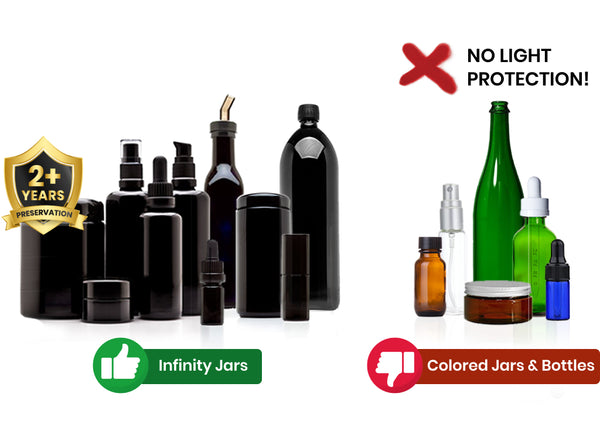
Oh, and have we mentioned that Infinity Jars products are thicker and tougher than ordinary jars? Because the possibility of breaking is one of the downsides of glass containers, these jars are designed to offer reliable strength. Plus, these jars are patented European-made, so you can be sure that you’re getting the best quality you deserve.
No other containers can offer all these features in one, especially while providing a stylish look that can easily go with different branding styles.
A Closer Look at Infinity Jars
Infinity Jars offers the best containers for preserving freshness and preventing products from going to waste. These jars have years of reputation in the glass industry, and they’ve won the trust of many retailers and high-end stores in the USA and abroad. Need proof? We have a collection of real-customer reviews--thousands of which come with 5-star ratings!
What’s more, Infinity Jars products are available in over 70 styles. So whatever product you’re selling or you’re planning to sell, you can find the best glass jars for your business right here. From the classic screw-top jars, practical kitchen bottles with spout, easy-apply glass rollers, elegant glass-on-glass apothecary jars, and many more, Infinity Jars has them all.
So before buying colored or clear glass jars wholesale, ask yourself: do my products need UV protection to stay fresh? If yes, then you know that Infinity Jars has already got you covered.
Bibliography:



